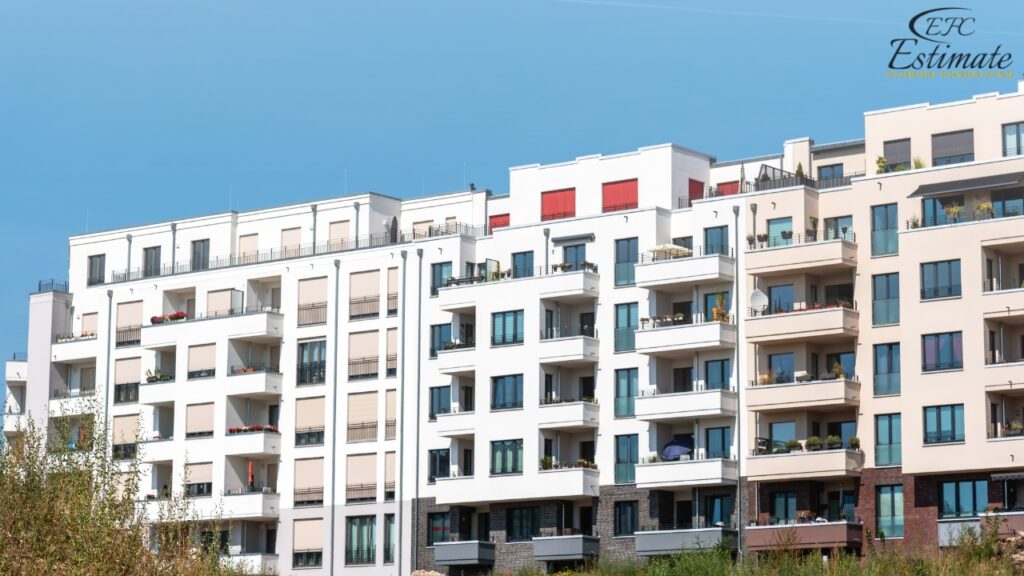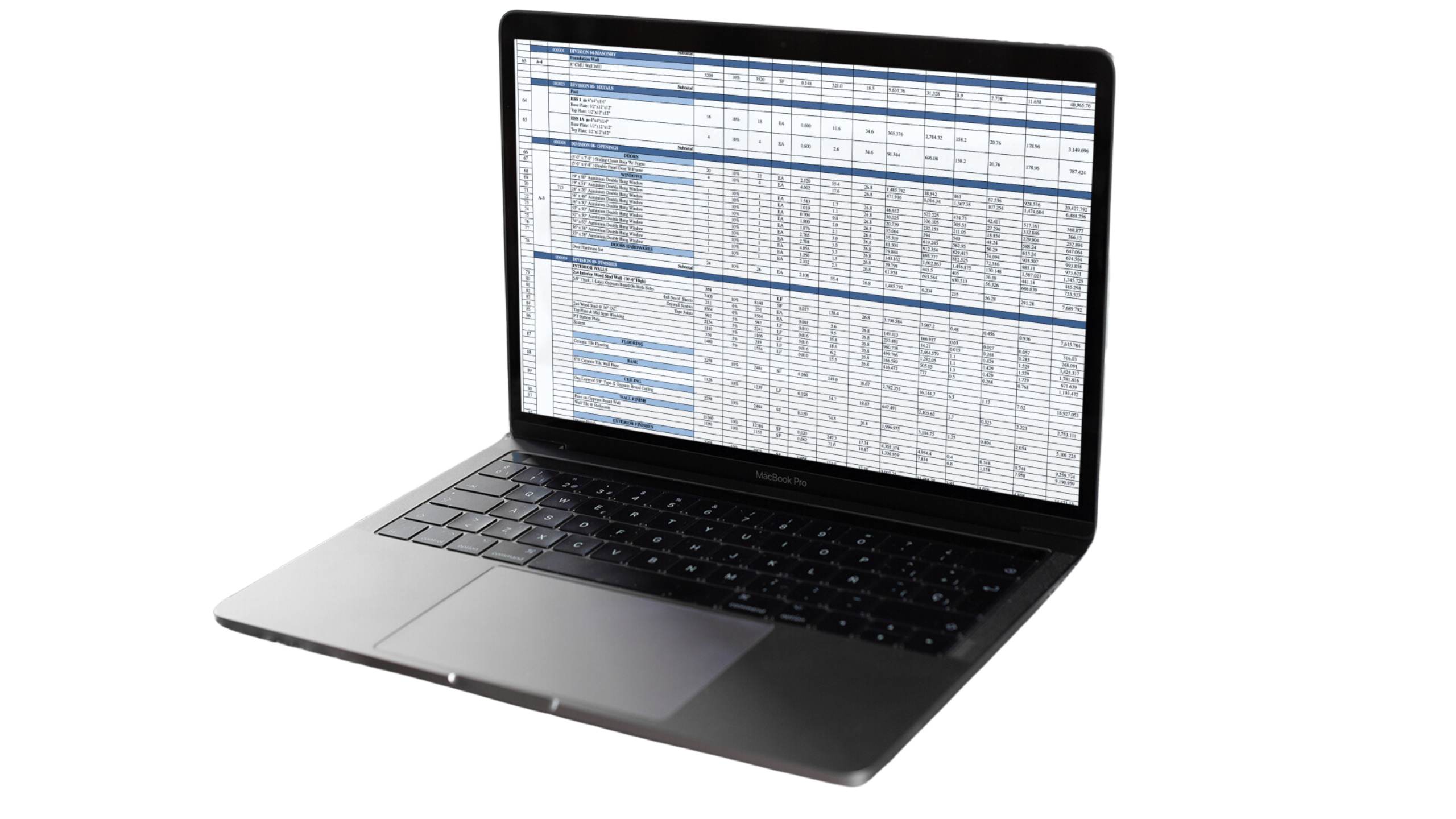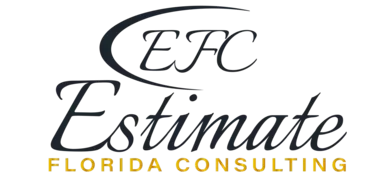How Much Does It Cost to Build a Multi-Unit Building?
On average, the cost to build a multi-unit residential building ranges from $182 to $312 per square foot. This estimate includes the cost of land acquisition, construction, interior finishes, and necessary amenities. For a 50,000-square-foot building, the total cost could range from $11.83 million to $20.28 million. This comprehensive budget covers all aspects of the project, from initial planning to the final touches, ensuring that all financial elements are accounted for and reducing the likelihood of unexpected expenses. Additionally, it’s important to factor in contingency costs, typically around 10% of the total budget, to cover unforeseen expenses that may arise during the construction process.

Factors Influencing the Cost
Location
The location of the multi-unit building plays a crucial role in determining the overall cost. Urban areas with high demand for housing will have higher land acquisition costs and construction expenses compared to suburban or rural locations. Additionally, local building codes, labor costs, and market conditions can significantly influence the budget. Urban locations often require more complex infrastructure and compliance with stricter regulations, adding to the overall expense of the project. Proximity to amenities such as schools, hospitals, and public transport also impacts the desirability and cost of the location.
Building Size and Scale
The size and scale of the building, including the number of units and common areas, directly affect the construction cost. Larger buildings with more units and extensive facilities such as parking garages, elevators, and recreational areas will have higher construction costs. The economies of scale can sometimes reduce the cost per unit in larger buildings, but the initial investment and complexity of managing a larger project can increase overall expenses. Furthermore, larger buildings might require additional features like fire safety systems and advanced HVAC systems, which contribute to the total cost.
Quality of Materials and Design
The choice of materials and the complexity of the design also impact the overall cost. High-quality materials and custom designs can significantly increase expenses. Multi-unit buildings often require durable and aesthetically pleasing materials to attract tenants and maintain long-term value. Investing in high-quality finishes and innovative design can enhance the building’s marketability and tenant satisfaction, leading to higher occupancy rates and rental income. Moreover, selecting energy-efficient materials and green building practices can add to the upfront costs but provide long-term savings and environmental benefits.
Cost Breakdown
Land Acquisition
Land acquisition costs can vary greatly depending on the location and size of the plot. In prime urban areas, land costs can be a substantial portion of the overall budget, while in less developed areas, the costs may be more manageable. Acquiring the right piece of land is a critical first step that influences the entire project’s feasibility and profitability. It’s also essential to consider the costs of land preparation, such as clearing, grading, and ensuring the site is ready for construction.
Location Type | Estimated Cost per Acre |
Urban | $845,000 – $16,900,000 |
Suburban | $423,500 – $8,450,000 |
Rural | $169,000 – $1,690,000 |
Construction Costs
Construction costs encompass everything from site preparation to the building’s structural framework, interior finishes, and mechanical systems. High-quality materials and labor contribute significantly to these costs. Detailed planning and efficient management can help control construction expenses and ensure that the project stays within budget. It’s also important to include costs for construction insurance, site security, and project management fees.

Construction Component | Estimated Cost per Sq Ft |
Site Preparation | $16.90 – $50.70 |
Structural Framework | $84.50 – $169 |
Interior Finishes | $67.60 – $169 |
Mechanical Systems | $33.80 – $84.50 |
Get 5 New Leads Next 7Days With Our System
- Multi-Family Building
- Hotel Building
- Hospital Building
- Warehouse Building
- High-Rise Building
- Shopping Complex
Interior Design and Finishes
The interior design and finishes of a multi-unit building are crucial for creating an attractive living environment. This includes flooring, cabinetry, appliances, and bathroom fixtures. High-quality interior finishes not only enhance the aesthetic appeal but also contribute to the durability and functionality of the living spaces. Additionally, choosing modern and stylish finishes can increase the rental value and tenant satisfaction, leading to better retention rates.
Design Element | Estimated Cost per Sq Ft |
Flooring | $8.45 – $25.35 |
Cabinetry | $16.90 – $33.80 |
Appliances | $8.45 – $33.80 |
Bathroom Fixtures | $8.45 – $25.35 |
Amenities and Common Areas
Multi-unit buildings typically offer a range of amenities and common areas to enhance the living experience. These can include fitness centers, swimming pools, community rooms, and green spaces. Providing attractive amenities can differentiate a property in the competitive rental market, appealing to potential tenants and justifying higher rental rates. Well-designed common areas and amenities can also foster a sense of community and improve the overall quality of life for residents.

Amenity Type | Estimated Total Cost |
Fitness Center | $169,000 – $845,000 |
Swimming Pool | $338,000 – $1,690,000 |
Community Room | $84,500 – $423,500 |
Green Spaces | $50,700 – $253,000 |
Permits and Fees
Obtaining the necessary permits and complying with local regulations can add to the overall cost. These expenses include building permits, zoning fees, and other regulatory compliance costs. Navigating the permitting process efficiently is essential to avoid delays and additional costs that can arise from non-compliance or procedural setbacks. It’s also important to account for inspection fees and any legal consultations required to ensure all aspects of the project meet local and national standards.
Permit Type | Estimated Total Cost |
Building Permits | $33,800 – $169,000 |
Zoning Fees | $8,450 – $42,350 |
Regulatory Compliance | $16,900 – $84,500 |
Additional Considerations
Sustainability and Energy Efficiency
Incorporating sustainable and energy-efficient features can increase upfront costs but provide long-term savings on operating expenses. Green building certifications, such as LEED, can enhance the building’s appeal to environmentally conscious tenants and reduce its environmental footprint. Investing in sustainability can also attract a premium market segment willing to pay higher rents for eco-friendly living spaces. Furthermore, energy-efficient systems can significantly reduce utility costs, providing financial benefits over the building’s lifespan.
Financing Options
Financing a multi-unit residential building can involve various methods, including equity financing, debt financing, and a combination of both. Developers should carefully consider their financing options to ensure they have the necessary funds to complete the project. Proper financial planning and securing favorable loan terms are crucial for maintaining cash flow and meeting project milestones. Additionally, exploring grants and incentives for green building practices can help offset some of the initial costs.
Average Cost to Build a Multi-Unit Building by Location
The cost to build a multi-unit building can vary significantly depending on the location. Urban areas typically have higher costs due to the price of land and the need for more complex infrastructure. Suburban and rural areas might offer lower costs, but they may come with other challenges such as transportation and access to amenities. Understanding regional cost variations helps in creating realistic budgets and setting appropriate rental prices. Additionally, considering the future growth potential of the area can influence long-term investment returns.
Floor Replacement vs. Refinishing
When deciding between replacing and refinishing floors in a multi-unit building, it’s important to consider both the initial costs and the long-term benefits. Replacing floors can provide a completely new look and potentially increase the value of the units, while refinishing might be a more cost-effective solution for maintaining the existing flooring. Evaluating the condition of the current flooring and the expectations of potential tenants can guide this decision. Additionally, refinishing can often be done with less disruption to current tenants, preserving rental income during the process.
Floor Materials Comparison
Choosing the right flooring material for a multi-unit building involves balancing cost, durability, and aesthetics. Common options include hardwood, laminate, vinyl, and tile. Each material has its own advantages and cost implications, making it important to select the one that best fits the building’s needs and budget. High-traffic areas may require more durable materials, while luxury units might benefit from high-end finishes. Additionally, considering the ease of maintenance and repair for each flooring type can impact long-term operational costs and tenant satisfaction.
Download Template For Multi-family Project Breakdown
- Materials list updated to the zip code
- Fast delivery
- Data base of general contractors and sub-contractors
- Local estimators

Conclusion
Building a multi-unit residential building is a complex and costly endeavor that requires careful planning and budgeting. By understanding the various factors that influence costs and making informed decisions throughout the process, developers can ensure a successful and financially viable project. From land acquisition to interior design and amenities, every aspect of the construction process plays a role in determining the overall cost. Properly managing these elements and anticipating potential challenges can lead to a profitable investment and a desirable living environment for future tenants. Additionally, staying informed about market trends and innovative building practices can provide competitive advantages in the ever-evolving real estate landscape.
FAQs
On average, the cost to build a multi-unit residential building ranges from $182 to $312 per square foot. For a 50,000-square-foot building, the total cost could range from $11.83 million to $20.28 million. This comprehensive budget includes land acquisition, construction, interior finishes, and amenities, ensuring that all financial elements are accounted for and reducing the likelihood of unexpected expenses. Additionally, factor in contingency costs, typically around 10% of the total budget, to cover unforeseen expenses during the construction process.
- Location: Urban areas with high demand have higher land and construction costs than suburban or rural locations. Local building codes, labor costs, and market conditions also impact the budget. Proximity to amenities affects the desirability and cost of the location.
- Building Size and Scale: Larger buildings with more units and extensive facilities, such as parking garages and elevators, have higher costs. While economies of scale can reduce the cost per unit, managing a larger project can increase overall expenses.
- Quality of Materials and Design: High-quality materials and custom designs significantly increase costs. Durable, aesthetically pleasing materials attract tenants and maintain long-term value. Energy-efficient materials and green building practices provide long-term savings but add to upfront costs.
Land acquisition costs vary greatly by location and size of the plot. In prime urban areas, land costs can be substantial, while less developed areas may be more manageable. Consider costs for land preparation, such as clearing and grading.
Location Type | Estimated Cost per Acre |
Urban | $845,000 – $16,900,000 |
Suburban | $423,500 – $8,450,000 |
Rural | $169,000 – $1,690,000 |
Construction costs encompass site preparation, structural framework, interior finishes, and mechanical systems. Efficient planning and management help control these expenses.
Construction Component | Estimated Cost per Sq Ft |
Site Preparation | $16.90 – $50.70 |
Structural Framework | $84.50 – $169 |
Interior Finishes | $67.60 – $169 |
Mechanical Systems | $33.80 – $84.50 |
Interior design and finishes create an attractive living environment. This includes flooring, cabinetry, appliances, and bathroom fixtures. High-quality finishes enhance aesthetic appeal and functionality.
Design Element | Estimated Cost per Sq Ft |
Flooring | $8.45 – $25.35 |
Cabinetry | $16.90 – $33.80 |
Appliances | $8.45 – $33.80 |
Bathroom Fixtures | $8.45 – $25.35 |
Amenities and common areas enhance the living experience, differentiating the property in the rental market.
Amenity Type | Estimated Total Cost |
Fitness Center | $169,000 – $845,000 |
Swimming Pool | $338,000 – $1,690,000 |
Community Room | $84,500 – $423,500 |
Green Spaces | $50,700 – $253,000 |
Permits and regulatory compliance add to the overall cost. Efficiently navigating the permitting process avoids delays and additional expenses.
Permit Type | Estimated Total Cost |
Building Permits | $33,800 – $169,000 |
Zoning Fees | $8,450 – $42,350 |
Regulatory Compliance | $16,900 – $84,500 |
Incorporating sustainable and energy-efficient features increases upfront costs but provides long-term savings on operating expenses. Green building certifications enhance appeal and reduce environmental impact. Energy-efficient systems significantly reduce utility costs over the building’s lifespan.
Financing can involve equity financing, debt financing, or a combination. Proper financial planning and securing favorable loan terms are crucial. Explore grants and incentives for green building practices to offset initial costs.
Google Reviews



Process To Get It Cost to Build a Multi-Unit Building Estimate Report
Here I am going to share some steps to get it cost to build a multi-unit building estimate report.
-
You need to send your plan to us.
You can send us your plan on info@estimatorflorida.com
-
You receive a quote for your project.
Before starting your project, we send you a quote for your service. That quote will have detailed information about your project. Here you will get information about the size, difficulty, complexity and bid date when determining pricing.
-
Get Estimate Report
Our team will takeoff and estimate your project. When we deliver you’ll receive a PDF and an Excel file of your estimate. We can also offer construction lead generation services for the jobs you’d like to pursue further.

